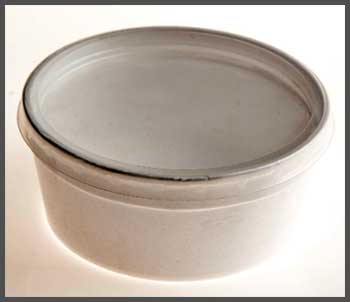When it comes to finding the perfect bathtub, the choices can be overwhelming. You want something that’s durable, comfortable, and visually appealing.
Two popular materials for bathroom tubs are polystyrene and acrylic. In this article, we’ll delve into the differences between these two materials, explore their pros and cons, and help you determine the best choice for your bathroom.
A Brief Comparison Table
| Feature | Polystyrene Tubs | Acrylic Tubs |
| Affordability | More affordable | Generally more expensive |
| Durability | Less durable | More durable |
| Weight | Lightweight | Heavier |
| Heat Retention | Poor heat retention | Better heat retention |
| Maintenance | Prone to scratches and dents | Easy to clean and maintain |
| Customizability | More customizable | Less customizable |
| Resistance to Fading | Prone to discoloration | Better resistance to fading |
| Installation Ease | Easier due to lighter weight | More challenging due to weight |
Pros of Polystyrene Tubs
- Affordability

One of the main reasons people choose polystyrene tubs is their budget-friendly price.
Polystyrene, a type of plastic, is often less expensive than acrylic and other bathtub materials.
If you’re looking to update your bathroom without breaking the bank, a polystyrene tub may be the way to go.
- Lightweight
Polystyrene tubs are lighter than their acrylic counterparts.
This can make installation easier and may be an important consideration if you’re installing the tub on an upper floor where weight could be an issue.
- Customizability
Polystyrene tubs can be easily molded into various shapes and sizes, giving you more flexibility in choosing the right design for your bathroom. They can be custom-made to fit your specific needs, which can be particularly useful in tight spaces.
Also Read: Pros And Cons of Victoria and Albert Tubs.
Cons of Polystyrene Tubs
- Durability Concerns
While polystyrene tubs are affordable, they may not be as durable as acrylic tubs. They are more prone to scratches, dents, and discoloration over time. This means you might need to replace a polystyrene tub sooner than an acrylic one.
- Limited Heat Retention
Polystyrene tubs don’t retain heat as well as acrylic tubs. This can make for a less comfortable bathing experience, particularly during the colder months.
Pros of Acrylic Tubs
- Durability

Acrylic tubs are known for their durability.
They are made from a solid sheet of acrylic, which is then reinforced with fiberglass for added strength.
This makes them resistant to scratches, dents, and fading, ensuring your tub maintains its appearance for years to come.
- Heat Retention
One of the main benefits of acrylic tubs is their ability to retain heat.
Acrylic is a better insulator than polystyrene, so your bathwater stays warmer for longer. This can make for a more relaxing and enjoyable bathing experience.
- Easy Maintenance
Acrylic tubs are easy to clean and maintain. The non-porous surface means that dirt and grime don’t adhere as easily, making it simple to keep your tub looking pristine. Additionally, minor scratches can often be buffed out with a fine abrasive cleaner.
Cons of Acrylic Tubs
- Price
Acrylic tubs tend to be more expensive than polystyrene tubs. While the investment may be worth it in terms of durability and comfort, it’s important to consider your budget when making your decision.
- Weight
Acrylic tubs are generally heavier than polystyrene tubs. This can make installation more challenging and may be a consideration if weight is a concern in your space.
Making the Right Decision
When it comes to choosing between polystyrene and acrylic tubs, it’s essential to weigh the pros and cons of each material and consider your specific needs and preferences.
Both materials have their advantages and disadvantages, so it’s crucial to think about factors such as budget, durability, heat retention, and design when making your decision.
- Consider Your Budget
If you’re on a tight budget, a polystyrene tub may be the more cost-effective option. Polystyrene tubs are generally less expensive than acrylic tubs, making them an attractive choice for those looking to save money on their bathroom renovation.
However, keep in mind that you may need to replace a polystyrene tub sooner than an acrylic one due to its lower durability.
- Think About Durability and Maintenance
If long-term durability is a top priority, an acrylic tub may be the better choice. Acrylic tubs are more resistant to scratches, dents, and fading than polystyrene tubs, ensuring your tub maintains its appearance for years to come.
Additionally, acrylic tubs are easy to clean and maintain, making them a convenient choice for busy households.
- Evaluate Heat Retention and Comfort
If you value a comfortable and relaxing bathing experience, an acrylic tub may be the better option. Acrylic tubs are known for their excellent heat retention, meaning your bathwater will stay warmer for longer.
On the other hand, polystyrene tubs don’t retain heat as well, which can make for a less comfortable experience, especially during colder months.
- Assess Design and Customizability
Both polystyrene and acrylic tubs offer design flexibility, but polystyrene has an edge in terms of customizability. Polystyrene tubs can be easily molded into various shapes and sizes, giving you more options when choosing the right design for your bathroom.
Acrylic tubs are also available in a wide range of designs but may not offer the same level of customization as polystyrene tubs.
Also Read: Pros And Cons of Bain Ultra Tub.
Frequently Asked Questions (FAQ)
There is no one-size-fits-all answer to this question, as the best material for your bathroom tub depends on your specific needs and preferences. Both polystyrene and acrylic tubs have their advantages and disadvantages, as discussed in this article. Ultimately, the best material for you will depend on factors such as budget, durability, and comfort.
Acrylic and fiberglass bathtubs each have their own merits. Acrylic tub s are known for their durability, heat retention, and ease of maintenance, while fiberglass tubs are typically more affordable and lightweight. However, fiberglass tubs may not be as durable as acrylic tubs, and they can be more susceptible to cracking or fading over time. Your choice between the two materials should be based on your budget, design preferences, and long-term durability requirements.
The best material for a bathtub wall surround depends on your specific needs and preferences. Some popular options include acrylic, fiberglass, ceramic tile, and solid surface materials. Acrylic and fiberglass surrounds are easy to install and maintain, while ceramic tile offers a more traditional look and better resistance to moisture. Solid surface materials, such as Corian or Swanstone, offer a seamless appearance and exceptional durability. Ultimately, the best material for your bathtub wall surround will depend on factors such as budget, design, and maintenance requirements.
Both acrylic and ceramic bathtubs have their pros and cons. Acrylic tubs are durable, easy to maintain, and offer excellent heat retention. They are also available in a wide range of shapes and sizes. Ceramic tubs, on the other hand, are known for their classic look and ability to withstand wear and tear. They are also more resistant to stains and mold. However, ceramic tubs can be more expensive and heavier than acrylic tubs, making them more difficult to install. Your choice between the two materials should be based on factors such as budget, design, and long-term durability requirements.
Acrylic tubs are generally quite durable and resistant to cracking. They are made from a solid sheet of acrylic that is reinforced with fiberglass, making them sturdy and able to withstand daily use. However, like any material, acrylic can crack under extreme pressure or if it’s subjected to a strong impact. Proper installation and care can help prevent cracks and prolong the life of your acrylic tub.
Final Thoughts
In conclusion, there is no one-size-fits-all answer when choosing between polystyrene and acrylic tubs. It’s essential to evaluate your specific needs, preferences, and budget when making your decision.
By considering factors such as durability, comfort, design, and cost, you can find the perfect bathtub material that meets your requirements and enhances your bathroom space.



